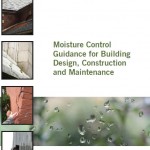Thu 30 Jan 2014
real IAQ = Moisture Control
Posted by admin under Biological Monitoring, Building Survey, Engineering Controls, EPA, IAQ, occupational hygiene, Risk, safety, Stucco
Comments Off on real IAQ = Moisture Control
If you really have an indoor air quality and mold/fungus issue, it usually stems from moisture. I’ve talked about it before, here. The simplest answer is to find the water. Control the moisture and you inevitable will control the future indoor air quality concerns. Once you have found (and controlled) the water, then it is time to repair the damage and lingering water (which can’t evaporate).
The issue is: where does moisture come from? Well, it ‘can’ come from almost any direction:

- from above (rain, roof vents, skylights)
- from below (moisture in flooring, concrete)
- walls (penetrations into the exterior, or windows and flashing)
- out of thin air (relative humidity)
The EPA has written a new document titled, “Moisture Control Guidance for Building, Design, Construction and Maintenance“. As a contractor, how do you know when the clean up is too much to handle? I’ve written a bit more about it here.
The best time to clean up a moisture issue was yesterday, but the second best time to clean it up is today. Don’t let it sit, it usually doesn’t get any better.